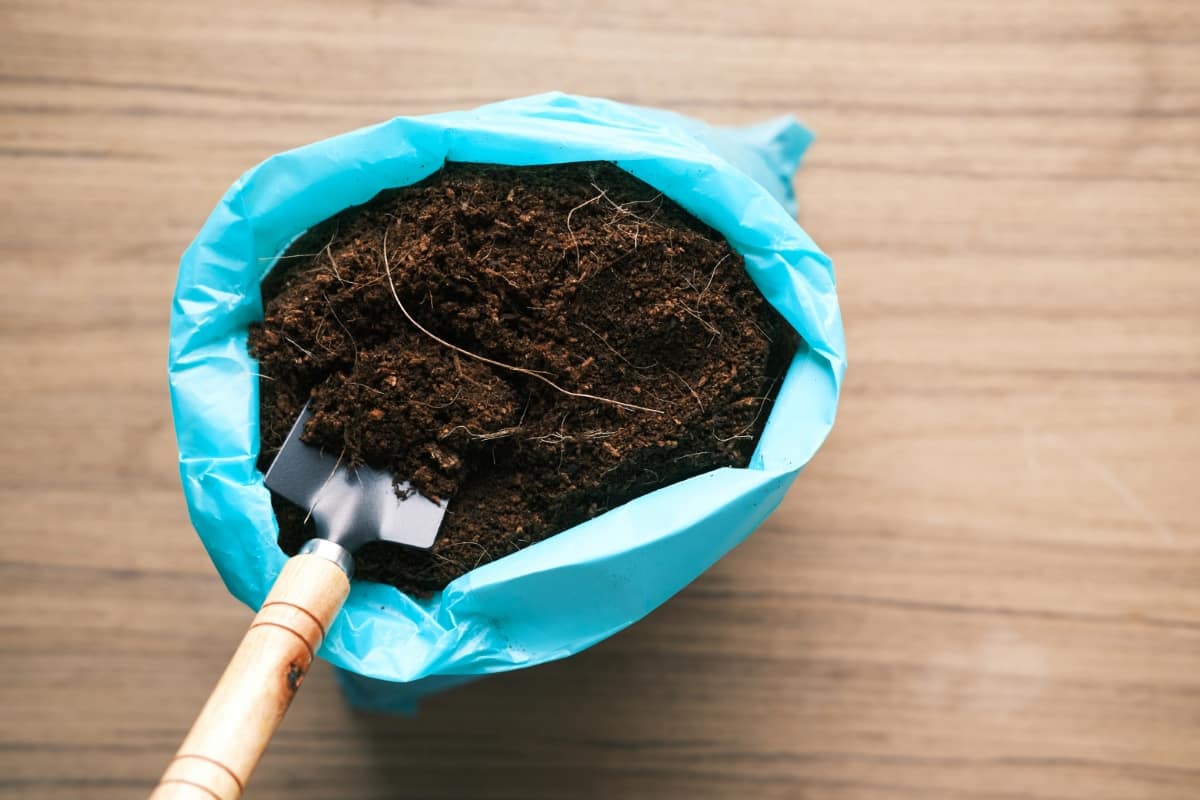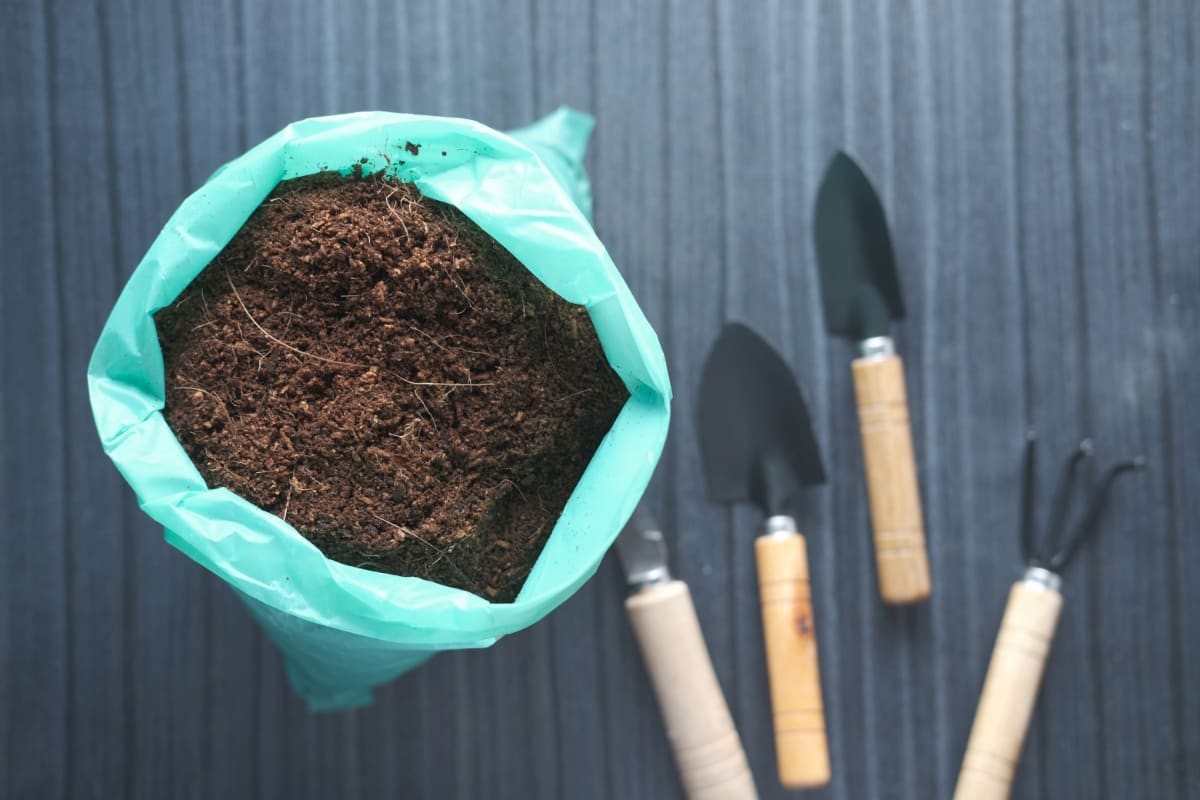Coco Peat, also called coir pith or coconut fiber dust, is a natural byproduct derived from processing coconut husks. It is widely used in gardening and horticulture as an alternative to conventional soil. While Coco Peat has gained popularity as a sustainable and eco-friendly alternative to traditional soil, there are several disadvantages that you should be aware of.

10 Coco Peat Disadvantages
Limited Nutrient Content of Coco Peat
Unlike traditional soil or compost, rich in essential nutrients (nitrogen, phosphorus, and potassium), Coco Peat has a relatively low nutrient content. This means that plants grown solely in Coco Peat may not receive the necessary nutrients to thrive. To overcome this problem, it is essential to supplement the nutrient levels by adding fertilizers or organic matter to the Coco Peat.
This will help give plants the essential elements they require for healthy growth and development. While Coco Peat provides excellent moisture retention properties and promotes good drainage, it may not be sufficient for optimal plant nutrition. So, address this limitation if you incorporate Coco Peat into your gardening routine.
High Salinity Levels of Coco Peat
When Coco Peat is harvested from coconut husks and processed, it is washed to remove excess salts. However, some salt content may remain in the final product despite these efforts. The high salinity levels in Coco Peat can pose challenges for certain plants that are sensitive to salt. These plants may experience stunted growth or even die when grown in Coco Peat with elevated salt levels.
To overcome this issue, it is recommended to leach out any excess salts by thoroughly flushing the Coco Peat with water before use. Regular monitoring of soil conductivity and adjusting irrigation practices accordingly is also essential for maintaining optimal salinity levels.
Acidic pH Levels of Coco Peat
Coco Peat has a naturally low pH, usually between 5.0 and 6.5, which can be problematic for specific plants. When the pH level is too acidic, it affects the nutrient availability in the soil. Some plants thrive in slightly acidic conditions, while others prefer neutral or slightly alkaline environments. To control the acidity of Coco Peat, you need to maintain the pH level by adding lime or other amendments to raise it to a more suitable range for your plants’ needs. However, this process can be time-consuming and potentially costly.
In case you missed it: How to Start a Coco Peat Making Business in India: A Profitable Ideas for Agri Entrepreneurs

Water Retention Issues of Coco Peat
The main issue with Coco Peat is that it can retain too much water, leading to overwatering and root rot. This can be problematic for plants that prefer well-draining soil. On the other hand, if not adequately hydrated, Coco Peat can become compacted and dry out quickly. This means you must monitor moisture levels closely and adjust watering accordingly. Another issue with water retention in Coco Peat is its inability to hold nutrients effectively.
Since it retains water so well, any added fertilizers or nutrients may get washed away before the plant roots can absorb them. Additionally, the high salt content in some types of Coco Peat can affect its ability to retain water properly. This can lead to poor drainage and hinder root development. To control these issues, it’s essential to mix Coco Peat with other ingredients, such as perlite or vermiculite, that improve drainage and provide better aeration for the roots.
Lack of Aeration of Coco Peat
Coco Peat has a fine texture that tends to compact over time, reducing the air pockets necessary for root respiration. This means that the roots may not be able to access enough oxygen, leading to stunted growth or even plant death. To overcome this problem, gardeners often mix Coco Peat with other materials like perlite or vermiculite to improve drainage and enhance aeration.
While this method helps alleviate some concerns associated with lack of aeration in Coco Peat, it also adds extra cost and effort to maintain your garden. If you choose to use Coco Peat as a growing medium for your home garden, consider its potential limitation in providing sufficient aeration for your plants’ roots.
Slow Decomposition Rate of Coco Peat
Unlike other organic materials, such as compost or leaf mulch, Coco Peat takes significant time to break down and become a part of the soil. This slow decomposition can be problematic for gardeners who want to regularly amend their soil with fresh organic matter. While Coco Peat eventually decomposes, it may not benefit your plants immediately.
The slow decomposition rate also means you must use more Coco Peat over time to maintain the same moisture retention level and nutrient content in your soil. Combine Coco Peat with other organic materials with faster decomposition rates to control these issues. This will help ensure a balanced nutrient profile in your soil while promoting better drainage and aeration.
Susceptibility to Fungal Growth of Coco Peat
Coco Peat, a natural organic material, provides an ideal environment for fungi to thrive. Due to its high water retention properties, Coco Peat can become excessively moist and create a damp environment that promotes fungal growth. This can lead to other diseases that can harm your plants. Fungal growth on Coco Peat can also affect the overall health of your garden by inhibiting nutrient absorption by plant roots.
In case you missed it: Composition of Coco Peat: How to Make, Uses, DYI Preparation Guide

Fungi compete with plants for nutrients and may even release toxins that harm the plants’ ability to grow and thrive. To minimize the risk of fungal growth, practicing good gardening practices such as proper watering techniques, ensuring adequate drainage, and maintaining proper air circulation around your plants is essential.
Difficulties with Rehydration of Coco Peat
When attempting to rehydrate Coco Peat, gardeners often find that adding water is insufficient. The dry Coco Peat tends to repel water initially, causing it to float on the surface rather than being absorbed. This means that additional effort is required to ensure proper saturation. Furthermore, maintaining its moisture level can be tricky even after successfully hydrating Coco Peat.
It tends to lose water quickly due to its high porosity and ability to drain rapidly. As a result, frequent watering may be necessary for plants grown in Coco Peat to receive adequate hydration. To overcome these difficulties, some gardeners pre-soak their Coco Peat before using it as a growing medium. This involves soaking the compressed blocks or bricks in water until they fully expand and become fluffy. By doing so, the rehydration process becomes much easier during planting.
Limited Availability and Cost of Coco Peat
While Coco Peat has gained popularity recently as a sustainable alternative to traditional soil, it may not be easily accessible in all areas. Due to the specific requirements for growing coconuts and producing Coco Peat may only be available in regions where coconut cultivation is prevalent. This can make it challenging for gardeners who live outside these areas to find a reliable source.
Additionally, the cost of Coco Peat (Coco Peat block 5 kg price is approximately 300 USD) can also be a deterrent for some gardeners. Coco Peat may have a higher price tag than regular potting soil or other organic amendments. This can make it less affordable for those on a tight budget or looking for more economical options.
Environmental Impact of Coco Peat
Coco Peat is derived from coconut husks primarily sourced from tropical regions like India and Sri Lanka. The demand for Coco Peat has led to deforestation and habitat loss in these areas as more and more coconut trees are cultivated for their husks. Additionally, the processing of Coco Peat requires large amounts of water and energy. This can contribute to water scarcity issues and increase greenhouse gas emissions during production.
In case you missed it: Peat Moss vs Coco Coir: Which is Best for Your Garden Plants?

Furthermore, the transportation of Coco Peat over long distances adds to its carbon footprint due to fuel consumption and emissions from vehicles used in shipping. Another aspect to consider is that while Coco Peat has some biodegradable properties, it takes significantly longer to decompose than other organic materials. This slow decomposition rate can contribute to landfill pollution when disposed of improperly or mixed with regular waste.
Conclusion
Coco Peat is made from the coconut husks. It is a byproduct of the coconut industry and has been used for centuries in traditional farming practices. While Coco Peat is a popular choice for many home gardeners, it’s essential to consider the disadvantages before buying it.
- Ultimate Guide to Ossabaw Island Hog: Breeding, Raising, Diet, and Care
- Ultimate Guide to Juliana Pig: Raising Facts, Size, Diet, Care, and Lifespan
- Raising Lleyn Sheep: Disadvantages, Price, Uses, Characteristics, and Care
- Ultimate Guide to Meishan Pig: Breed Facts, Breeding, Raising, and Care
- Ultimate Guide to Teacup Pigs: Raising, Diet, Lifespan, Cost, and Care
- Guide to Raising Poll Dorset Sheep: Facts, Profile, Characteristics, Uses, and Care
- Ultimate Guide to Bighorn Sheep: Characteristics, Diet, Lifespan, Breeding, and Lifecycle
- Ultimate Guide to Raising Katahdin Sheep: Farming Facts, Breed Profile, Uses, and Care
- Ultimate Guide to Raising Oreo Cows: Belted Galloways Farming Facts, Profile, Uses, and Care